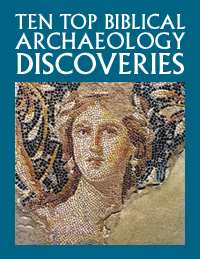
Aerial photo of the proposed Hittite city of Zippalanda. Courtesy Emanuele Taccola, University of Pisa.
Although the Hittites were an extremely influential kingdom in the ancient Near East during the Late Bronze Age (c. 1550–1200 BCE), many features of this Anatolian power remain allusive to archaeologists and historians. However, one feature of the Hittite kingdom appears to finally be answered: the location of the important cultic center and royal city of Zippalanda. According to a University of Pisa press release, cultic buildings and other finds uncovered at the site of Uşaklı Höyük in north central Turkey could help confirm that the mound is indeed the important city of Zippalanda.

The Hittite Cult and Discovering Zippalanda
Although the site of Uşaklı Höyük was first suggested to be the Hittite city of Zippalanda in the 1990s, it was not until recent excavations that solid evidence began to be uncovered. Especially significant was the discovery of several monumental public buildings, including a large Hittite temple and a unique circular structure that may be related to the “Storm God of Zippalanda,” who is mentioned in numerous Hittite texts. The Italian-Turkish team, led by researchers from the University of Pisa, also uncovered several cuneiform tablets. These tablets, written in Hittite, an ancient Indo-European language, consist of religious and administrative texts.
The site of Uşaklı Höyük was inhabited periodically from the Chalcolithic period (c. 4500–3300 BCE) through modern times. During the time of Hittite control over Anatolia and northern Syria in the Late Bronze Age, the site was a major city, which would be appropriate for an important cultic center like Zippalanda. In communication with Bible History Daily, Amir Gilan, Professor of Hittite and Anatolian Studies at Tel Aviv University, said the identification of the site with Zippalanda is “quite convincing,” despite the limited number of texts so far uncovered.
Besides the site’s geographic location, the cultic buildings discovered there support the idea that Uşaklı Höyük can be identified with ancient Zippalanda. In one excavation area, the team uncovered a large, monumental building with enormous walls constructed out of granite blocks. The building matches the construction style of other important Hittite temples but also features a large stone floor mosaic. The surviving mosaic measures roughly 10 by 23 feet, with over 3,000 stones forming geometric patterns. According to the excavators, this is possibly the oldest mosaic in the Near East.
Not far from the temple, the team excavated an unusual circular structure that might be a second cultic building. The floor was covered with several layers of dirt that contained large amounts of animal bones and ceramic fragments. According to the team, no similar structures have been discovered in Turkey, and the building’s function remains uncertain, though it may have been used as a place to make offerings to a deity. One Hittite text (CTH 477) might even speak of this exact building when describing a ritual celebrated in Zippalanda in which sacrificed animals were placed into a “pit.”
The city of Zippalanda was a main cultic center of the Hittite kingdom. One of the city’s main gods was the “Storm God of Zippalanda” and, according to the Hittite text mentioned above, was one of he main gods of the sacrificial rituals described in the text.
Read more in Bible History Daily:
All-Access members, read more in the BAS Library:
Hittites in the Bible: What Does Archaeology Say?
The Hittites: Between Tradition and History
The post Hittite Cult Center Uncovered in Turkey appeared first on Biblical Archaeology Society.


0 Commentaires